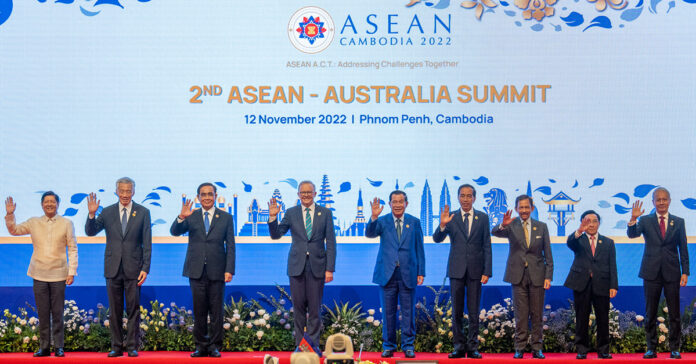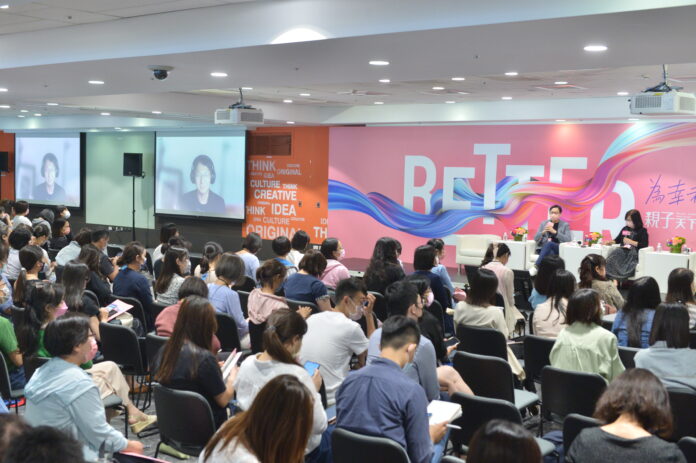KUALA LUMPUR, MALAYSIA –
Media OutReach – 14 November 2022 – Kenanga Investment Bank Berhad (“
Kenanga“) today kicked off its annual sixth Fraud Awareness Week (“
FAW“), held in conjunction with the International FAW of the Association of Certified Fraud Examiners (“
ACFE“), headquartered in Austin, Texas. Kenanga’s FAW is the centerpiece of a month-long fraud awareness campaign to shine the spotlight and raise awareness on the importance of fraud detection and prevention, as well as respond to the United Nations Global Compact’s 10
th Principle, which emphasizes the need for businesses to work against corruption in all its forms.
Themed ‘Reaffirming Ethical and Moral Resilience for Good Governance’, FAW aims to reiterate Kenanga’s commitment and belief on the importance of ethical and moral values in shaping good governance whilst moulding the corporate culture that thrives within the current evolving and transforming regulatory landscape.
Similar to the previous two years, all programs for FAW including the Opening Ceremony, FAW Games and Talk Series were undertaken virtually or online, and this year’s FAW Games featured a record number of 376 participants, a 28.7% increase compared to the previous year. Participants included those from regulatory bodies, public listed companies, professional bodies and Kenanga’s vendors such as Bursa Malaysia Berhad, Securities Commission Malaysia, Securities Industry Development Corporation, Nestle, Petronas, AirAsia, Kumpulan Wang Simpanan Pekerja, Sime Darby, Lembaga Tabung Haji and Deloitte Consulting Malaysia.
“As the frontline regulator of the Malaysian capital market, Bursa Malaysia welcomes such efforts from industry players as this helps maintain a ‘fair and orderly market’ preventing occurrences of trading misdemeanours, frauds and scams – which helps to protect the interests of investors,” said Tan Sri Abdul Wahid Omar, Chairman of Bursa Malaysia Berhad.
“The pace of the evolution of fraud risks is not going to slow down any time soon and our strongest defense in the fight against fraud is awareness cultivated through the collective efforts of all. Let us reiterate our commitment to the anti-fraud agenda by reaffirming the importance of ethical and moral values in shaping good governance,” mentioned Datuk Chay Wai Leong, Group Managing Director of Kenanga Investment Bank Berhad.
“In line with our theme this year, we aim to continue spreading the message of anti-fraud and to highlight the grave impact that comes from failure to protect oneself from fraud and scams. From within, we will continue to strengthen Kenanga’s core by equipping our employees with the necessary knowledge and understanding of the importance of anti-fraud,” added Maheswari Kanniah, Group Chief Regulatory and Compliance Officer of Kenanga Investment Bank Berhad.
“The ACFE started fraud week 22 years ago and its beginnings were humbled. In two decades time, it has evolved into an international campaign with hundreds, and sometimes more than a thousand organisations – that is thanks in large part to organisations like Kenanga, that embrace the idea of getting the word out about fraud in a big way,” commented Bruce Dorris, President and Chief Executive Officer of the ACFE.
In addition to this flagship campaign which serves to unite employees and industry stakeholders to propagate a culture of strong corporate governance, Kenanga also conducts annual e-tests on various aspects of the subject matter to assess and reinforce our employees’ grasp and knowledge of good governance and business practices. Since 2020, Kenanga employees have attended over 16,000 training hours related to ethics, compliance and governance topics including anti-fraud, anti-bribery and corruption, and anti-money laundering, counter financing of terrorism and targeted financial sanctions.
Hashtag: #Kenanga
The issuer is solely responsible for the content of this announcement.
About Kenanga Investment Bank Berhad (197301002193 (15678-H))
Established for more than 45 years, Kenanga Investment Bank Berhad (the Group) is a financial group in Malaysia with extensive experience in equity broking, investment banking, treasury, Islamic banking, listed derivatives, investment management, wealth management, structured lending and trade financing with strong foundations in regulatory compliance and risk management.
An innovative and established home-grown brand, the Group’s digital ambition includes building a robust digital ecosystem that meets the needs of its clients and businesses. Some of its game-changing products includes Malaysia’s fully online digital stockbroking platform Rakuten Trade and a fully A.I. robo-advisor, Kenanga Digital Investing. The Group also launched Malaysia’s first securities broking e-wallet, Kenanga Money, paved the way in AI-led Quan and algorithmic trading, kick-started a revolutionary supply chain financing solution for SMEs and made inroads into the digital assets space through its investment in Tokenize Technology (M) Sdn. Bhd.
The Group has garnered a host of awards and accolades reflecting its strong market position. It was awarded under the categories of Highest Returns to Shareholder Over Three Years, Best Overall Equities Participating Organisation by Bursa Malaysia, Best Overall Derivatives Trading Participant, Best Structured Warrant Issuer, Best Retail Equities Participating Organisation, Best Institutional Equities Participating Organisation Investment Bank; along with Best Trading Participant and Best Institutional Equities Participating Organisation and for Equity and Financial Derivatives for 18 consecutive years. The Group was also accorded the title of Best Institutional Derivatives Trading category by Bursa Malaysia.
The Group continues to be a regular and repeat recipient of distinguished industry accolades, such as the Lipper, Fundsupermart and Morningstar awards. Rakuten Trade, Malaysia’s first fully digital securities broker in 2017 via a joint venture with Japanese fintech giant Rakuten Securities Inc was also named Malaysia’s fintech company of the year in 2018 by the Malaysian Communications and Multimedia Commission (MCMC). For its continued efforts towards community outreach and employee volunteerism, the Group was awarded the coveted Company of the Year award for environmental and sustainability at Sustainability & CSR Malaysia Awards 2021. The Group is also a Participant of the United Nations Global Compact and adheres to its principle-based approach to responsible business.
Today, Kenanga Investment Bank Berhad is an award-winning leading independent investment bank in the country with a continuous commitment towards driving collaboration, innovation, digitalisation and sustainability in the marketplace.
This Press Release was issued by Kenanga Group’s Marketing, Communications & Sustainability department.












